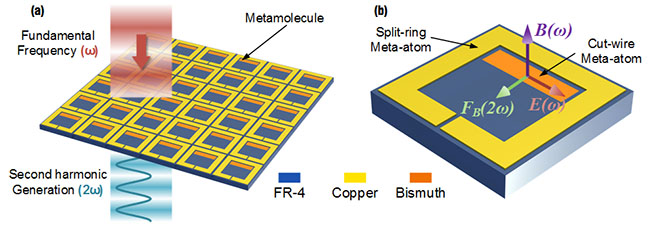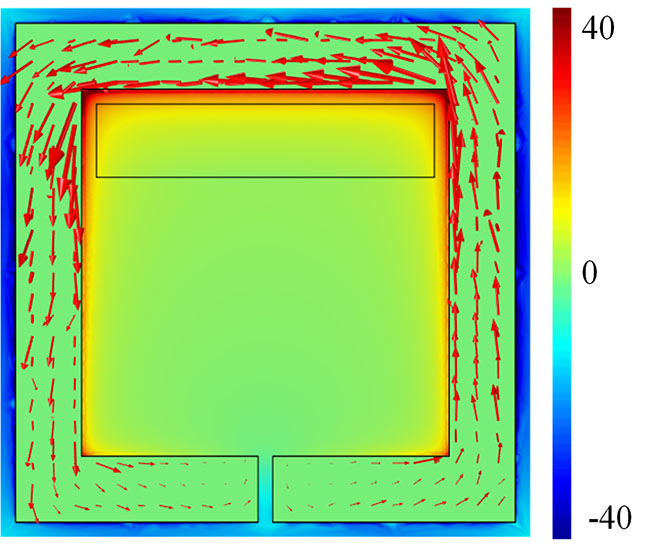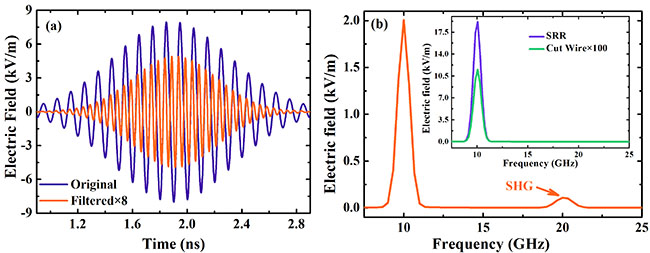Artificial Nonlinearity Generated from Electromagnetic Coupling Metamolecule
On April 17th, Prof. Ji ZHOU, School of Materials Science and Engineering, Tsinghua University, and his colleagues, published a paper entitled “Artificial Nonlinearity Generated from Electromagnetic Coupling Meta-molecule” in Physical Review Letters. This work provides a novel artificial nonlinear optical materials with a metamaterial approach based on classical electromagnetism.

Figure 1: Schematics of the nonlinear metamolecule array (a) and single metamolecule (b).
Optical nonlinearity is a universal physical phenomenon arising from interactions between high-intensity light and matters, which plays an essential role in many revolutionary techniques, such as laser, optical communication, and optical information technology. However, due to the lack of clear physical picture for the description of the natural nonlinear process, the research on nonlinear optical material remains qualitative and semi-quantitative for a long time. It has been a great challenge to achieve the ambitious goal of exactly predicting and precisely designing an optical nonlinear material.

Figure 2: Magnetic field distribution of the metamolecule at resonance.
The artificial material proposed in this study is based on the coupling of localized electric and magnetic fields inside an ingeniously designed metamolecule, which breaks the symmetry of the physical states and generates the artificial optical nonlinearity. Because the nonlinearity originates entirely from the metamolecule, involving no natural nonlinear material, it can be precisely designed and configured by varying the structure. Meanwhile, the physical process of the artificial nonlinear theory is highly explicit and clear, which can be applied to a very broad electromagnetic spectrum. As demonstrated by related researches, by properly scaling the geometry of the metamolecule, it generates distinct optical nonlinearity in the regime raging from microwave to infrared. This innovative artificial mechanism offers unprecedented design freedom for the optical nonlinearity, which would significantly promote the development of new-generation light source and optical information technology, and open possibilities to a whole range of fascinating researches and applications, such as nonlinear optical lens and hologram.

Figure 3: Time-domain transmission spectra of the nonlinear metamolecule (a) and its frequency-domain spectrum (b); inset: frequency spectra of two meta-atoms.
Prof. Ji ZHOU is the corresponding author, and postdoc fellow Yongzheng WEN is the first author. This work was supported by the National Natural Science Foundation of China and the China Postdoctoral Science Foundation.
https://journals.aps.org/prl/abstract/10.1103/PhysRevLett.118.167401
(Edited by Huashan Li)

